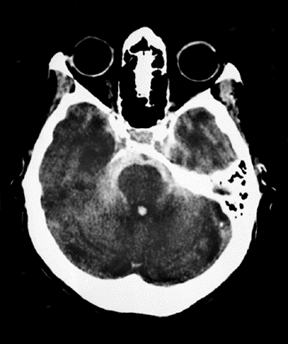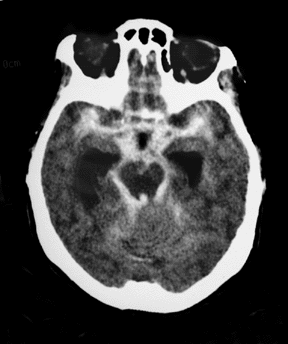Course Authors
Martin J. Carey, M.D.
Dr. Carey reports no conflict of interest. This conference contains information on commercial services and products.
Estimated course time: 1 hour(s).

Albert Einstein College of Medicine – Montefiore Medical Center designates this enduring material activity for a maximum of 1.0 AMA PRA Category 1 Credit(s)™. Physicians should claim only the credit commensurate with the extent of their participation in the activity.
In support of improving patient care, this activity has been planned and implemented by Albert Einstein College of Medicine-Montefiore Medical Center and InterMDnet. Albert Einstein College of Medicine – Montefiore Medical Center is jointly accredited by the Accreditation Council for Continuing Medical Education (ACCME), the Accreditation Council for Pharmacy Education (ACPE), and the American Nurses Credentialing Center (ANCC), to provide continuing education for the healthcare team.
Upon completion of this Cyberounds®, you should be able to:
Identify patients from their history who are at high risk for a serious cause for headache
State the factors associated with post lumbar puncture headache
Know how to treat patients with a post lumbar puncture headache.
The late summer sun is rising and you are just finishing your coffee. A young woman walks into the department holding her head. Looking at her, you think you remember her from a few days earlier, when she had turned up late one afternoon with a headache. She worked as a night charge nurse, and she was about 34 years old. You're pretty sure you had asked her all the relevant questions about her headache and recall that you were concerned enough to arrange a CAT scan.
You thought that the CAT scan was normal but you had performed a lumbar puncture (LP) just to be certain, and you got it first time! The LP was described as a "champagne tap" with not even a single red cell. You had given her an intravenous dose of prochlorperazine and her headache had resolved completely.
When you go to see her, she tells you she has had a severe headache which started the day after the LP. You recall that you insisted she stay lying down for at least six hours after you performed the LP. She also says that the headache now feels much better than it did a few minutes earlier. An examination is completely normal, with no fever and no focal neurological deficits. Fundi are both normal.
You decide to call for the old notes and the CAT scan, and sit and ponder the case for a few minutes. You ask yourself some questions:
- What were those headache questions I asked her? Weren't there 14 of them?
- What were the features that were worrying about the headache?
- What is the differential today?
- Surely, she cannot have a post LP headache? After all, she lay down for a long time afterwards and that prevents the headache, doesn't it?
- Perhaps a review of the CAT scan is in order. Is this it?
- What are the risk factors for the development of post LP headache?
- Why has her headache improved since she came into the department?
- What can be done to help her?
Answers and Discussion
What Were Those Headache Questions? Weren't There 14 of Them?
As with many problems in medicine, taking a clear and concise history is very important in patients with headache. A series of questions can help to guide the clinician toward or away from further investigation or testing. Each year, in the United States, 70% of adults will experience a headache. Of these, 5% will seek medical attention.(1) Over 90% of the patients seeking medical attention for their headaches will be diagnosed as having either tension headache or migraine. The questions that can help to determine who should be investigated include:(2)
- Do you have more than one type of headache? It is often useful to ask a patient to describe their "typical" headache from start to finish. Is this one different from normal?
- How did the headache begin? Was there trauma? Is there evidence of infection?
- Are the symptoms worsening or staying the same?
- How often do the headaches occur and how long do they last?
- Do they occur at any special time or under special circumstances?
- Think about the possibility of trigger factors:
- Diet (strong cheeses, red wine, chocolate)
- Sleep patterns, either excessive or too little Stress
- Drugs (nitrates, vasodilators, some betablockers)
- Hormonal: oral contraceptives, steroid withdrawal, menses
- Think about the possibility of trigger factors:
- Are there warning signs that the headache is about to start?
- Where does it actually hurt?
- What is the quality of the pain? Is it pounding or sharp?
- What other symptoms are experienced during the pain? Nausea? Abdominal pain?
- Does the headache make you stop your normal activities?
- What makes the headache worse?
- What makes the headache better? What medications do you use for it?
- Does anyone else in your family have headaches?
- What do you think is causing your headache?
These questions will help the physician to determine if there are features of this headache that would lead them to consider further investigation.
What Were the Features That Were Worrying About the Headache?
Our trusty ER doctor would have some ideas of the features of headache which would classify the headache as more likely to be either "benign" or "ominous." These may be summarized as:
Table 1.
| Benign | Ominous |
|
|
What Is the Differential Today?
The differential diagnosis today would include:
- Post LP headache
- Meningitis
- Recurrence of primary headache --migraine, cluster or tension
- Other non traumatic causes of headache -- hypertension, toxic exposures (carbon monoxide for example), drug related (caffeine withdrawal, nitroglyceride), upper respiratory infections, e.g., sinusitis.
Surely she cannot have apost LP headache? After all, she lay down for a long time afterwards and that prevents the headache, doesn't it?
Post lumbar puncture headache occurs in between 10 and 30% of all persons who have a lumbar puncture. It is classically frontal or occipital and may be associated with nausea, vomiting, dizziness, tinitus, low back pain, blurring of vision and neck stiffness. The symptoms classically improve on lying down. Although the pain of post LP headache usually starts within 48 hours, there are cases where the pain has been delayed for up to 12 days. Usually, the pain will resolve spontaneously in four to eight days.
Position after LP seems to have no effect upon the incidence of post LP headache. In a study by Carbaat in 1981(3) they found that 38% of persons who ambulated immediately after the LP developed a headache, usually on the same day as the LP. If the patient was put on strict bed rest for 24 hours, then 36% of these patients developed headache, usually on the day after the LP.
It is interesting to note that the practice of putting patients flat on their back after LP started after a single remarkably positive study produced in 1958.(4) Subsequent studies have been unable to duplicate these findings.(5)
Perhaps a review of the CAT scan is in order. Is this it?
Figure 1.

Figure 2.

You hope not! These scans show an extensive subarachnoid hemorrhage, with much blood in the subarachnoid spaces. Since you know that your patient had a clear tap and this patient would certainly have had a very bloody tap, this cannot be her CT. Always check the name on the X-rays!
What Are the Risk Factors for the Development of the Post Lumbar Puncture Headache?
Risk factors for post lumbar puncture headache include:
- Age: The older the patient the lower the risk of post LP headache
- Sex: Females are at greater risk
- Previous headaches: Patients with headaches in the week prior to an LP were at risk. (Note: This study performed LPs on a large number of persons, some for therapeutic reasons unrelated to headache. Patients who had headache had an increased risk of post LP headache.)(5)
- Low body mass index: Skinny people are at higher risk.
- The direction of the needle bevel: If the needle bevel is held parallel to dural fibers, the risk of post LP headache is 50% of that seen in patients where the bevel is held perpendicular to the direction of the dural fibers.
- Needle size - If a small needle is used, the risk is greatly diminished:
16g 80% develop headache 18g 25 - 75% develop headache 20g 10 - 40% develop headache 22g 5 - 25% develop headache 24 - 26g < 10% develop headache Note that with the smaller needles, especially 24 or 26g, manometry is impossible.
It is also worth noting that the amount of fluid drawn, the opening pressure, the experience of puncturist and psychiatric factors were NOT associated with an increased risk of post LP headache in this study. Other studies have demonstrated that there may be an increased risk in less experienced operators.(6) The practice of lying patients down has been discussed above. There are no studies I can find regarding hydration status as a risk factor.
Why Has Her Headache Improved?
The triage nurse, realizing she was in a lot of pain, has lain her down on a gurney. A classic sign with post LP headache is that they improve on lying down.
What Can Be Eone to Help Her?
A study by Camann(7) demonstrates that 300mg of caffeine (equivalent to about two cups of "drip" coffee), as a single oral dose, reduced headache severity significantly when compared with placebo at four hours. However, the effect was clinically small and there was no difference between the two groups at 24 hours, nor in the numbers from each group requiring a blood patch.
An epidural blood patch is the treatment of choice for patients with severe or persistent post LP headache. It was initially introduced in the 1960s. It is thought that the blood tracks up a mean of about six spinal segments and down about three. As the blood spreads, the position of the second LP is not as critical and can be performed in the space above that of the original LP. The procedure involves taking about 10 mls of autologous blood and injecting it into the epidural space in the vicinity of the initial lumbar puncture. It is an effective procedure for over 98% of patients with post LP headache and the effect is usually immediate. One third of patients may have a residual backache for one to two days. The etiology of post LP headache is thought to be due to persistent leak of CSF from the site of the original LP and this results in contraction of the subarachnoid space and expansion of the pain sensitive intracerebral veins.(8)
Our charge nurse patient received her blood patch, affording her immediate relief. She was discharged home, in a much happier frame of mind than when she arrived.
You decide to take time to see what the day has in store. Wandering outside, you note that it looks like it will be another hot one...